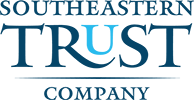Politics, improving economic news, and strong equity market returns dominated the headlines in 2017. With the S&P 500 Index gaining over 21%, the NASDAQ almost 30%, and the MSCI EAFE (international) up over 25%, equity investors had much to cheer about. Fixed income investors also benefited as the Barclays Aggregate Bond index was up over 3.5% for the year. The global expansion continues to gain strength that gives support to investors to continue to invest risk assets. The S&P 500 index saw an unprecedented rally, in that it rose every single month of the year, and saw its strongest performance since 2013.
Outperforming sectors. The MSCI Emerging Market (EM) index was up over 37% for the year, with both international developed market and emerging market equities outperforming the S&P 500 for the first time since 2012. As far as U.S. equities, large cap stocks outperformed small cap stocks by a wide margin. Growth stocks also significantly outperformed value stocks for the full year with healthier global growth and a weaker U.S. dollar. In fixed income, high yield outperformed the broad U.S. bond market for the fourth consecutive year, with cash and commodities the worst performers.
One of the more surprising characteristics of the market in 2017 was the lack of volatility. The largest decline for the S&P 500 during the year was 3%, significantly less than an average decline of over 14% dating back over the last 37 years. 2018 could very well be a more volatile and possibly difficult market for investors. With positive economic momentum expected to continue, translating into expanding corporate profit margins, risk assets can continue to reward investors in the new year.
On the economic side, global and domestic growth continues to pick up with recession risk low. The labor market remains strong with the U.S. at full employment with continued decreases expected in the unemployment rate. Inflation remains subdued with upward pressure expected this year as wages rise. The Federal Reserve (the Fed) is expected to deliver at least two and possibly three rate hikes this year.
On the political front, Congress passed and the President signed a sweeping tax reform bill into law late in 2017 that we expect to improve economic growth. As we head further into 2018 and get closer to mid-term U.S. Congressional elections, more extreme partisanship could emerge. The Fed is also expecting a new Chairman and some new voting members, which could change the stance to a more hawkish (in favor of tighter monetary policy).
The expectations for 2018 are high and there are many good reasons to be optimistic. We’ve had back-to-back quarters of 3%+ growth, improving consumer confidence, and a strong housing market are just a few of the indicators. There’s always a risk of expectations becoming too high for the market to beat. Any disappointment in economic or corporate profitability data this year could cause investors to turn cautious.
Two big drivers of market performance in 2018 will be from fiscal and monetary policy. On the fiscal side, the newly passed tax reform package that dramatically lowers corporate tax rates create incentives for businesses to increase investment (capital expenditures). These increased investments should improve productivity that will allow faster economic growth without a worrying increase in inflation. On the monetary side, with the new Fed Chairman Jerome Powell taking over for Janet Yellen, the markets will be paying close attention to any changes in the easy money policy in place as well as reductions in regulatory regime.
